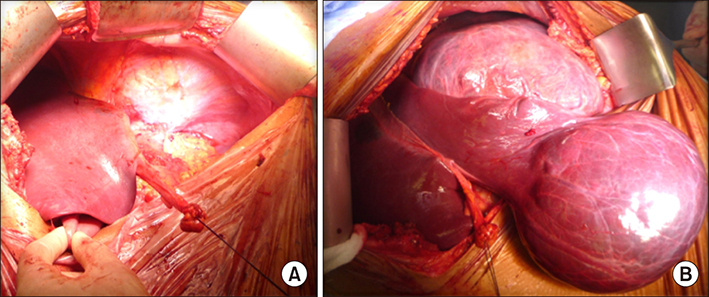Ann Hepatobiliary Pancreat Surg.
2019 May;23(2):174-177. 10.14701/ahbps.2019.23.2.174.
Hepatocellular carcinoma in body builders; an emerging rare but serious complication of androgenic anabolic steroid use
- Affiliations
-
- 1University Hospital Wales, and Public Health Wales, Cardiff, UK. chriswoodward91@gmail.com
- KMID: 2448772
- DOI: http://doi.org/10.14701/ahbps.2019.23.2.174
Abstract
- Illicit use of androgenic anabolic steroids (AAS) is a known problem amongst certain groups including body builders and other athletes. Use of these drugs is thought to be high in some areas of South Wales. A number of adverse effects have been associated with use of AAS including the development of hepatic adenomas. There have been a handful of rare cases of the development of hepatocellular carcinoma following AAS use. We report two such cases presenting to the same surgical centre in South Wales within six months. We do this with reference to data from Public Health Wales, including the Harm Reduction Wales Needle and Syringe provision report, which indicate a particularly high rate of use of AAS in the surrounding area. We believe these cases are important from the public health point of view. They demonstrate a rare and not widely known about, but potentially fatal adverse effect of AAS, now becoming prevalent with the high use of these drugs. This is important for doctors to be aware of, but also could form the focus of a public health campaign targeted at AAS users.
Keyword
MeSH Terms
Figure
Reference
-
1. Baker JS, Graham MR, Davies B. Steroid and prescription medicine abuse in the health and fitness community: a regional study. Eur J Intern Med. 2006; 17:479–484.
Article2. Casavant MJ, Blake K, Griffith J, Yates A, Copley LM. Consequences of use of anabolic androgenic steroids. Pediatr Clin North Am. 2007; 54:677–690. x
Article3. Public Health Wales. Harm reduction database wales: needle and syringe provision 2015-16. Cardiff: Public Health Wales;2016.4. Velazquez I, Alter BP. Androgens and liver tumors: Fanconi's anemia and non-Fanconi's conditions. Am J Hematol. 2004; 77:257–267.
Article5. Gorayski P, Thompson CH, Subhash HS, Thomas AC. Hepatocellular carcinoma associated with recreational anabolic steroid use. Br J Sports Med. 2008; 42:74–75. discussion 75.
Article6. Hardt A, Stippel D, Odenthal M, Hölscher AH, Dienes HP, Drebber U. Development of hepatocellular carcinoma associated with anabolic androgenic steroid abuse in a young bodybuilder: a case report. Case Rep Pathol. 2012; 2012:195607.
Article7. Solbach P, Potthoff A, Raatschen HJ, Soudah B, Lehmann U, Schneider A, et al. Testosterone-receptor positive hepatocellular carcinoma in a 29-year old bodybuilder with a history of anabolic androgenic steroid abuse: a case report. BMC Gastroenterol. 2015; 15:60.
Article8. Stoot JH, Coelen RJ, De Jong MC, Dejong CH. Malignant transformation of hepatocellular adenomas into hepatocellular carcinomas: a systematic review including more than 1600 adenoma cases. HPB (Oxford). 2010; 12:509–522.
Article9. Korika P. Anabolic steroid use in Britain. Int J Drug Poicy. 1994; 5:6–10.10. Lenehan P, Bellis M, McVeigh J. A study of anabolic steroid use in the North West of England. J Perform Enhanc Drugs. 1996; 1:57–70.11. McVeigh J, Bates G, Chandler M. Steroids and image enhancing drugs: 2014 survey results. Liverpool: Centre for Public Health, Liverpool John Moores University;2015.
- Full Text Links
- Actions
-
Cited
- CITED
-
- Close
- Share
- Similar articles
-
- A Case of Rhabdomyolysis in a Body-Builder
- Severe Persistent Jaundice after the Abuse of an Anabolic Androgenic Steroid Analogue
- Spontaneous Corpus Cavernosum Abscess in a Healthy Man Using Long-Term Androgenic Anabolic Steroids
- Stevens-Johnson syndrome and abuse of anabolic steroids
- Acne Conglobata Induced by Anabolic Androgenic Steroids



